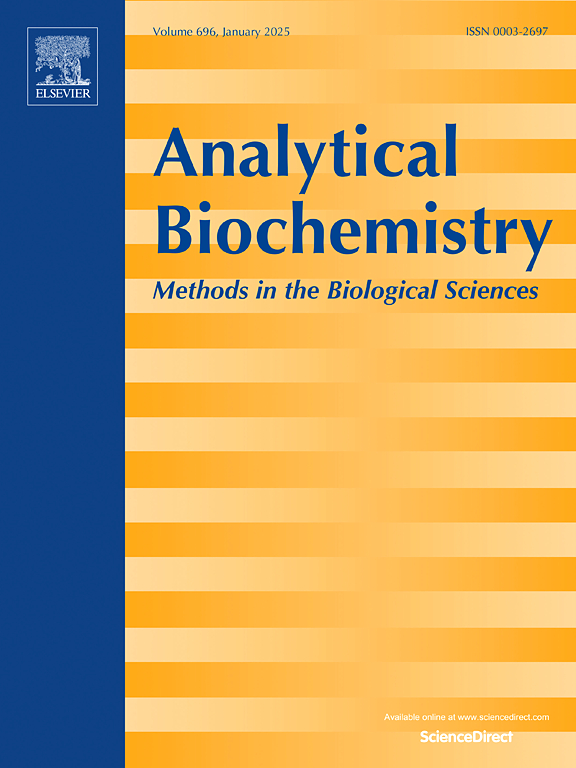Univariate versus multivariate approaches for resolving the overlapped spectra of azelastine hydrochloride and mometasone furoate
IF 2.5
4区 生物学
Q2 BIOCHEMICAL RESEARCH METHODS
引用次数: 0
Abstract
Azelastine hydrochloride (AZE) and Mometasone furoate (MOM) combination is used to treat allergic rhinitis' symptoms. The aim of this work is to qualitatively and quantitatively analyze both medications using univariate and multivariate spectrophotometric techniques in a comparative study. Regarding univariate approaches; AZE was quantified by direct measurement at 291 nm within (5–60 μg/mL) concentration range. While, MOM was assayed by absorption correction (AC) approach at 250 nm within the range of (2–18 μg/mL). The LOD values for AZE and MOM were (0.79 μg/mL) and (0.21 μg/mL), respectively. Classical least squares (CLS), partial least squares (PLS), principal component regression (PCR), multivariate curve resolution-alternating least squares (MCR-ALS) and artificial neural networks (ANN) were the applied multivariate chemometric models. The proposed methods were utilized for analyzing the binary mixture in laboratory-synthetic mixtures and pharmaceutical preparation with correlation coefficients values ≥ 0.9996. No statistically significant variation was found between the applied methods and the reported HPLC one. The methods’ sustainability was assessed using blue applicability grade index (BAGI) and Red-Green-Blue 12 (RGB12) metrics. The obtained findings revealed that the suggested methodologies are safer option than the published HPLC technique for the conventional pharmaceutical analysis of the studied medications.

单变量与多变量方法分析盐酸氮唑elastine和糠酸莫米松的重叠光谱。
盐酸氮唑elastine (AZE)和糠酸莫米松(MOM)联合用于治疗变应性鼻炎的症状。本研究的目的是在比较研究中使用单变量和多变量分光光度法对两种药物进行定性和定量分析。关于单变量方法;在5 ~ 60 μg/mL浓度范围内,在291 nm处直接测定AZE含量。在(2 ~ 18 μg/mL)范围内,采用250 nm吸收校正法测定MOM。AZE和MOM的LOD分别为(0.79 μg/mL)和(0.21 μg/mL)。经典最小二乘(CLS)、偏最小二乘(PLS)、主成分回归(PCR)、多变量曲线解析-交替最小二乘(MCR-ALS)和人工神经网络(ANN)是应用的多变量化学计量模型。该方法适用于相关系数≥0.9996的实验室配制混合物和药物制剂中二元混合物的分析。所采用的方法与报道的HPLC方法差异无统计学意义。采用蓝色适用性等级指数(BAGI)和红绿蓝12 (RGB12)指标评价方法的可持续性。所获得的结果表明,建议的方法比已发表的高效液相色谱技术更安全的选择,用于研究药物的传统药物分析。
本文章由计算机程序翻译,如有差异,请以英文原文为准。
求助全文
约1分钟内获得全文
求助全文
来源期刊

Analytical biochemistry
生物-分析化学
CiteScore
5.70
自引率
0.00%
发文量
283
审稿时长
44 days
期刊介绍:
The journal''s title Analytical Biochemistry: Methods in the Biological Sciences declares its broad scope: methods for the basic biological sciences that include biochemistry, molecular genetics, cell biology, proteomics, immunology, bioinformatics and wherever the frontiers of research take the field.
The emphasis is on methods from the strictly analytical to the more preparative that would include novel approaches to protein purification as well as improvements in cell and organ culture. The actual techniques are equally inclusive ranging from aptamers to zymology.
The journal has been particularly active in:
-Analytical techniques for biological molecules-
Aptamer selection and utilization-
Biosensors-
Chromatography-
Cloning, sequencing and mutagenesis-
Electrochemical methods-
Electrophoresis-
Enzyme characterization methods-
Immunological approaches-
Mass spectrometry of proteins and nucleic acids-
Metabolomics-
Nano level techniques-
Optical spectroscopy in all its forms.
The journal is reluctant to include most drug and strictly clinical studies as there are more suitable publication platforms for these types of papers.
 求助内容:
求助内容: 应助结果提醒方式:
应助结果提醒方式:


